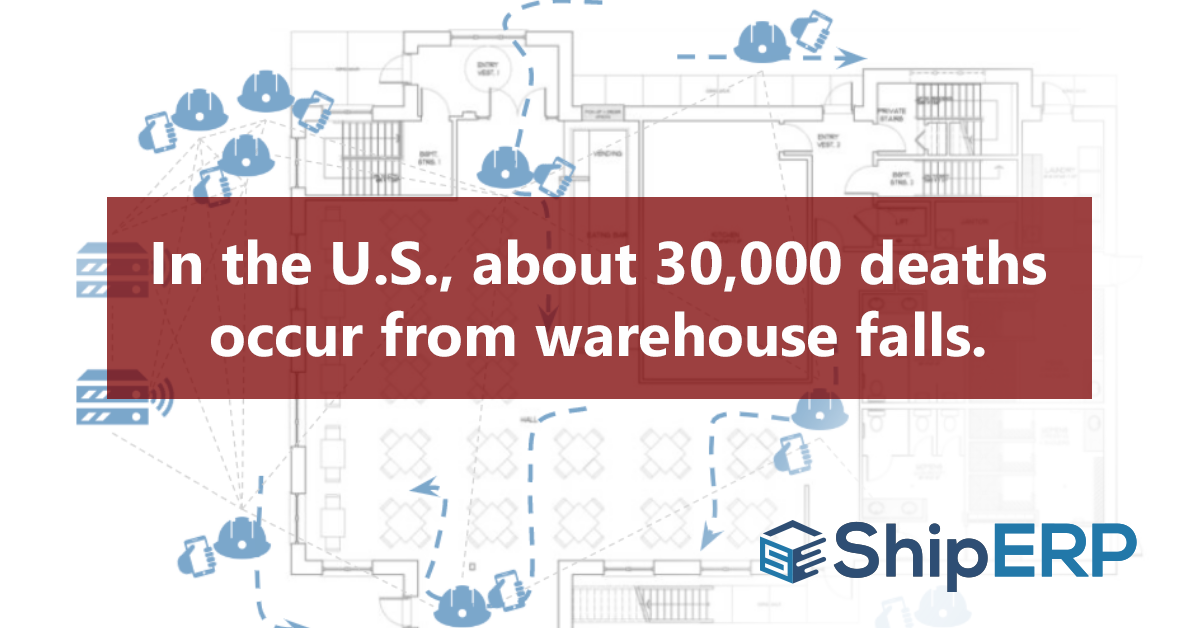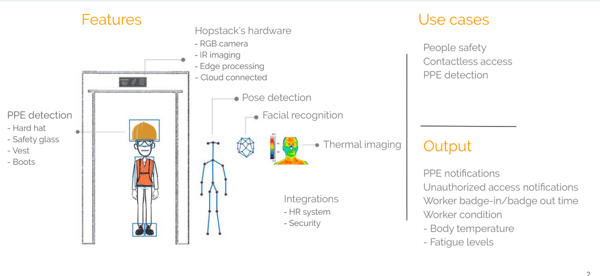
How AI and IoT Enhance Warehouse Worker Safety
IoT sensors and artificial intelligence can work together to decrease the 30,000 deaths that occur annually due to warehouse falls. This statistic derives from unsafe working conditions in the warehouse.
This content was originally published on Hopstack, the cloud-based IoT worker and asset intelligence platform for logistics heavy operational sites.
Although machine automation in warehouses has been around for more than a century, warehouses remain dangerous places to work. According to research by IBM, more than 2.78 million people die as a result of work-related accidents each year. That equates to 178 workplace accidents every 15 seconds. Thankfully, a technology-led revolution to enhance warehouse worker safety has already begun.
IoT sensors are gathering invaluable data that humans cannot. Connected sensors are monitoring not just warehouse equipment but the movement of humans, too, by collecting information on workers at all points in a warehouse.
Artificial intelligence is turning the data into insights. Much mysticism surrounds AI. In reality, it’s ‘just’ advanced analytics taking swathes of big and structured data to make predictions about when machines will break down, tools will become faulty, and objects likely to fall. This data-to-technology approach is being used by global-scale firms that rely on warehouse ‘real-estate’ for their operations, such as Amazon, Alibaba, and DHL. The rise in e-commerce means that warehouses need to be particularly efficient to meet rising demand. In turn, this means that worker safety and efficiency are paramount, and failure to get this right can result in high unplanned costs. Let’s further explore these two.
On the ‘efficiencies’ side, according to McKinsey, most operations leaders do not know what their lowest potential costs per facility could be. Hence redesigning and digitizing warehouse processes is such a priority in the relentless quest to reduce cost. Given the link between processes and labor, clearing your warehouse of even the smallest of ‘choke-points’ can be hugely beneficial to the bottom line.The most effective way to identify bottlenecks increase yield per worker is to use cost-effective indoor location technology.
Contactless entry technologies can also help, particularly so during the COVID-19 crisis, where limited human interaction and physical or ‘social’ distancing can save lives. Customers increasingly require smart solutions that ‘enable’ an end-2-end approach for the user, offering features such as PPE detection, thermal image processing, pose detection and facial recognition all-in-one, connected to cloud-based analytics and to edge processing capabilities.

Some warehouses can be the size of 5 football pitches. Contactless entry sensors collect and transmit data to enable managers to track employees, knowing where they are at all times, mainly if they stop moving for some time (often due to injury). Supplemented with other advanced IoT enabled technologies, and you can begin to construct a pretty safe work environment in a naturally hazardous environment. For example, lone worker systems, such as RTLS (real-time location systems), offer additional location mapping, enable automated emergency calls, and HQ alerting.
Concerning worker safety, statistics are shocking. In the US alone, according to the Department of Labor Statistics, a remarkable 95 million work-days are lost every year due to warehouse accidents, including approximately 30,000 deaths from falls. Worker injuries cost firms almost $40,000 in direct costs per year, while indirect costs can reach $150,000. Most warehouse accidents are either forklift, conveyor, storage, or manual lifting/handling/pushing injuries. Roughly 3,000 warehouse workers injure themselves every year slipping.
As a result, having the right fall detection technologies are so important. Wearable trackers alert the wearer when an object is ‘approaching’ that shouldn’t be. At Hopstack, they use smart tags and algorithms to map out a person’s movement and detect a fall.
Humans will be humans. Thus, the journey to minimize and even eliminate the number of warehouse fatalities and injuries is a journey of digitization and a software-over-hardware approach. AI and IoT enhance warehouse worker safety. Installing these technologies might bring additional up-front costs but can create far greater efficiencies, safety, and lower costs over the medium to long term.

